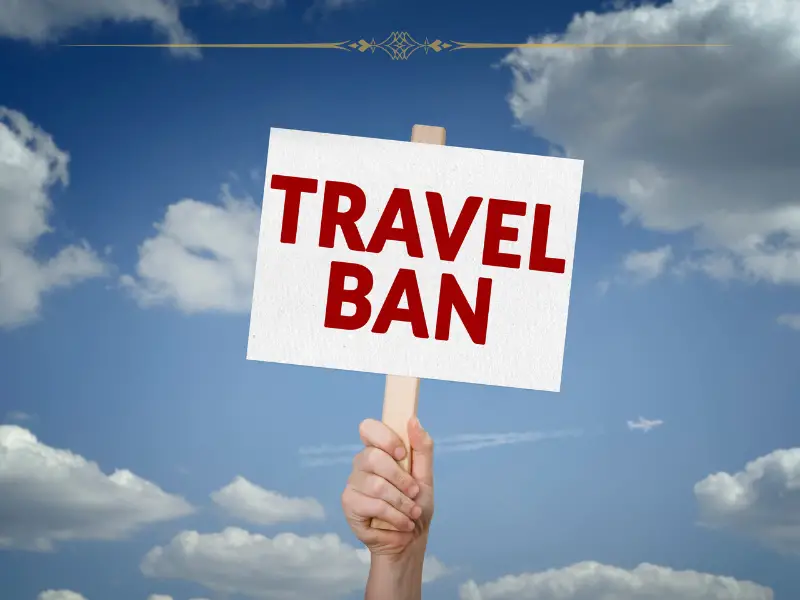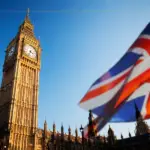United States is preparing to implement sweeping changes to its entry requirements that could impact travelers from dozens of countries worldwide.
New Restrictions on the Horizon

The United States government is reportedly finalizing plans for a comprehensive overhaul of its entry requirements that would create a three-tiered system affecting citizens from 43 countries across the globe. This new approach to border control represents one of the most extensive revisions to US entry policies in recent years.
According to sources familiar with the developing regulations, the proposed system would categorize nations into three distinct levels, each with different restrictions ranging from complete entry bans to provisional status pending further review. The changes could dramatically alter travel possibilities for citizens from the affected nations, with particularly severe implications for countries facing complete bans.
The Red List: Complete Entry Prohibition
The most restrictive category, informally referred to as the “red list,” would impose a comprehensive entry ban on citizens from eleven nations. Travelers holding passports from these countries would be denied entry to the United States regardless of purpose or circumstances:
Afghanistan, Bhutan, Cuba, Iran, Libya, North Korea, Somalia, Sudan, Syria, Venezuela, and Yemen would all face complete prohibition under the proposed regulations. This represents a significant hardening of America’s border stance toward these nations, several of which have long had complicated diplomatic relationships with the United States.
For citizens of these countries currently residing in the US or those with dual citizenship, the implications remain unclear. Immigration experts suggest that current visa holders and permanent residents would likely be exempt from these new restrictions, though clarification from US authorities is still pending.
Selective Access: Business Travel Only
The second tier of the proposed system would target citizens from eight countries: Belarus, Eritrea, Haiti, Laos, Myanmar, Pakistan, Russia, Sierra Leone, South Sudan, and Turkmenistan.
While not facing a complete ban, travelers from these nations would experience significant new limitations. According to the proposed rules, tourist and immigration visas would no longer be issued to citizens of these countries. The only exception would be for business travelers who meet certain financial thresholds – effectively limiting US access to wealthy entrepreneurs and corporate representatives.
This approach represents a more nuanced restriction than a complete ban, but nonetheless would eliminate tourism and family visits for millions of potential travelers. The inclusion of Russia and Belarus – the only European nations on either of the restrictive lists – signals the widening impact of geopolitical tensions on travel policies.
Countries Under Review: A 60-Day Window
The third category in the new system comprises nations placed under official observation, with a 60-day window to address American concerns or potentially face reclassification into one of the more restrictive categories.
This “yellow list” includes 22 countries spanning Africa, the Caribbean, and the Pacific: Angola, Antigua and Barbuda, Benin, Burkina Faso, Cambodia, Cameroon, Cape Verde, Chad, Republic of Congo, Democratic Republic of Congo, Dominica, Equatorial Guinea, Gambia, Liberia, Malawi, Mali, Mauritania, Saint Kitts and Nevis, Saint Lucia, Sao Tome and Principe, Vanuatu, and Zimbabwe.
For citizens of these nations, the immediate impact may be limited, but the possibility of stricter measures looms if their governments fail to satisfy US requirements within the two-month deadline. The specific concerns the US government has raised with each nation have not been publicly detailed, but sources suggest they relate to security cooperation, document verification processes, and information sharing practices.
Regional Impact Analysis
The proposed changes would disproportionately affect certain regions of the world, with Africa bearing the brunt of the new restrictions. Of the 43 countries facing potential limitations, 22 are African nations, representing a significant portion of the continent.
Asia follows with 10 countries on the various lists, while the Caribbean and Latin America account for 7 nations. The Middle East has 3 countries facing restrictions, and Europe only 2 – both in Eastern Europe.
This regional distribution has raised questions about the criteria being used to determine which countries face restrictions. Security analysts point to factors including counterterrorism cooperation, document security standards, and information sharing capabilities as likely considerations in these determinations.
Implications for Global Mobility
The proposed restrictions would significantly reshape global mobility patterns if implemented. For citizens of countries on the complete ban list, the United States would become effectively inaccessible for any purpose – from tourism and education to business and family reunification.
For those nations in the second tier, the class-based restriction would create a two-tiered system where only the wealthy could gain entry. Immigration advocates have criticized this approach, suggesting it undermines America’s historical position as a nation open to visitors and immigrants of all economic backgrounds.
Nations under observation face uncertainty, with their citizens potentially rushing to secure US visas before any tightening of restrictions. Travel agencies in several “yellow list” countries have already reported surges in US visa applications as travelers attempt to secure entry before potential changes take effect.
Security Justifications
While official statements regarding the policy shift remain limited, security experts suggest the move aligns with broader efforts to enhance border security and screening protocols. The United States has consistently evaluated entry requirements based on perceived security risks, document reliability, and counterterrorism cooperation.
Former immigration officials point to concerns about passport security, identity verification capabilities, and information sharing as critical factors in these determinations. Countries with limited technological infrastructure for secure document issuance or inadequate security screening capabilities typically face greater scrutiny under US entry policies.
The three-tiered approach suggests a more calibrated response to these concerns, with different levels of restriction based on the specific security issues identified with each nation. However, without official clarification, the exact reasoning behind each country’s placement remains subject to speculation.
Diplomatic Repercussions
The proposed changes have already begun generating diplomatic tensions, with several affected countries expressing strong opposition to their inclusion on the restrictive lists. Nations with significant diaspora communities in the United States have been particularly vocal, citing the impact on families and cultural connections.
Diplomatic representatives from various listed countries have initiated discussions with the US State Department seeking clarification and reconsideration. For countries under observation, these diplomatic engagements take on particular urgency given the 60-day window to address American concerns.
International relations experts note that such restrictions often trigger reciprocal measures, potentially complicating travel for American citizens to these regions as well. Several nations have historically responded to US travel restrictions with similar limitations on American travelers, suggesting the possibility of a cascading effect on global mobility.
Economic Consequences
Beyond the implications for individual travelers, the proposed restrictions could have significant economic impacts for both the United States and the affected nations. Tourism revenue would decline from countries facing complete or partial bans, while educational institutions may lose international students from these regions.
For the affected countries, particularly those with significant expatriate communities in the US, the economic consequences could be substantial. Remittances – money sent home by workers in the United States – represent a vital economic lifeline for many nations on the restricted lists. Limiting new immigration could gradually reduce these financial flows.
Business relationships may also suffer, particularly with nations in the second tier where only wealthy entrepreneurs would maintain access. While major corporations might navigate these restrictions through their financial resources, smaller businesses and emerging entrepreneurs would face significant barriers to US market access.
Historical Context
The proposed system represents the latest evolution in America’s ongoing recalibration of its border policies. Throughout its history, the United States has periodically adjusted entry requirements in response to changing security concerns, diplomatic relationships, and domestic political considerations.
However, the scope of the current proposal – affecting 43 nations across multiple continents – makes it one of the most extensive revisions to entry policy in recent decades. Immigration historians note similarities to Cold War-era restrictions, though the current approach appears more targeted and nuanced in its criteria.
The three-tiered structure also represents an innovation in US entry policy, moving beyond simple binary determinations of eligibility toward a more graduated system that reflects the complex nature of international relations and security considerations in the contemporary world.
Exceptions and Special Cases
While the general framework of the proposed system has been outlined, immigration experts anticipate numerous exceptions and special provisions when the full regulations are published. Humanitarian considerations typically factor into even the strictest entry prohibitions, with allowances for asylum seekers and refugees facing documented persecution.
Additionally, diplomatic personnel, certain international organization employees, and individuals with specialized skills in high-demand fields often receive exemptions from broad entry restrictions. The details of these exceptions remain forthcoming, but will prove critical in determining the real-world impact of the new system.
For dual citizens – those holding nationality from both an affected country and an unrestricted nation – the implications remain unclear. Historically, US border authorities have considered all citizenships when making entry determinations, though primary nationality often receives greatest emphasis.
Implementation Timeline and Logistics
According to sources familiar with the planning process, the new system would be implemented gradually rather than immediately. Countries under observation would face the earliest decision point, with their status reassessed after the 60-day improvement window.
For nations facing more immediate restrictions, immigration officials suggest a transition period would likely be established, allowing for the completion of already-scheduled visa interviews and processing of pending applications before new limitations take effect.
Border security experts note that implementing such comprehensive changes requires significant preparation, including training for consular officers, updates to electronic screening systems, and coordination with transportation carriers. These logistical requirements suggest that even after official announcement, full implementation may take several months.
Impact on Current Visa Holders
One of the most pressing questions for many communities concerns the status of individuals who already hold valid US visas or residence permits. While official clarification remains pending, immigration law experts suggest that existing visa holders would likely be grandfathered under previous regulations.
Green card holders and lawful permanent residents would almost certainly be exempt from new entry restrictions, regardless of their country of origin. However, non-immigrant visa holders might face additional scrutiny or limitations on visa renewal, depending on the final regulatory language.
For international students, visiting scholars, and temporary workers from affected countries, the uncertainty regarding their future status has created significant anxiety. Educational institutions and employers have begun reaching out to potentially affected individuals, though concrete guidance remains limited pending official policy announcements.
Conclusion
As the United States finalizes this significant revision to its entry policies, the implications extend far beyond the immediately affected nations. The new system signals a more stratified approach to global mobility, with access to American territory increasingly determined by nationality, wealth, and geopolitical considerations.
For travelers from the 43 nations facing potential restrictions, planning future visits to the United States has become considerably more complex. Citizens of countries under observation face particular uncertainty, with their travel possibilities dependent on diplomatic developments over the coming months.
Immigration advocates, diplomatic representatives, and affected communities continue to monitor developments closely as the final policy takes shape. While security considerations drive much of this regulatory shift, the human impact remains profound for millions of potential travelers whose American dreams may now face new and significant barriers.




